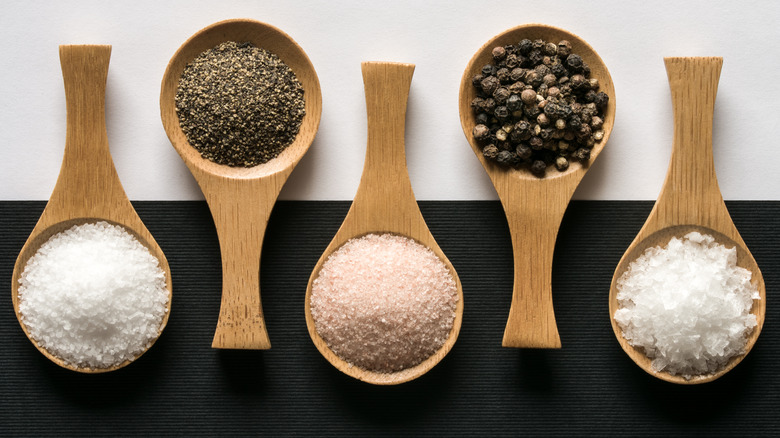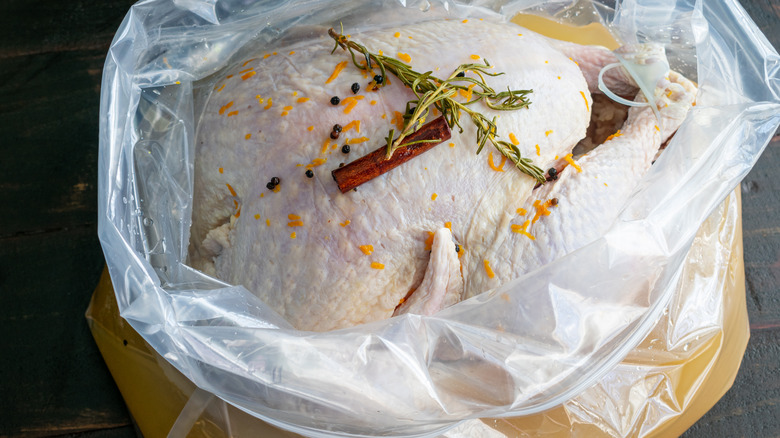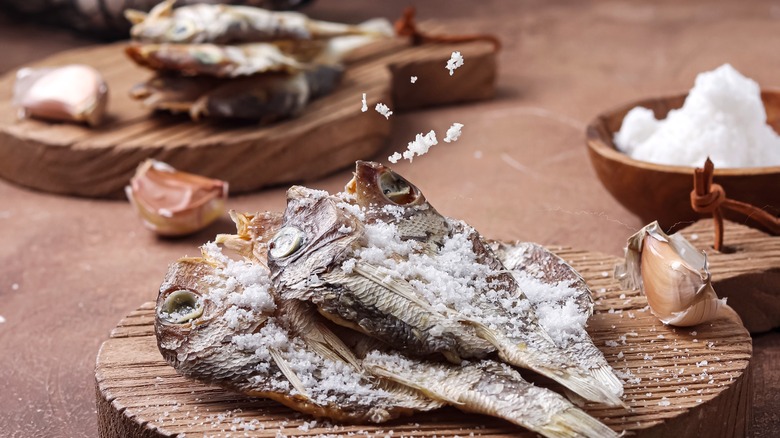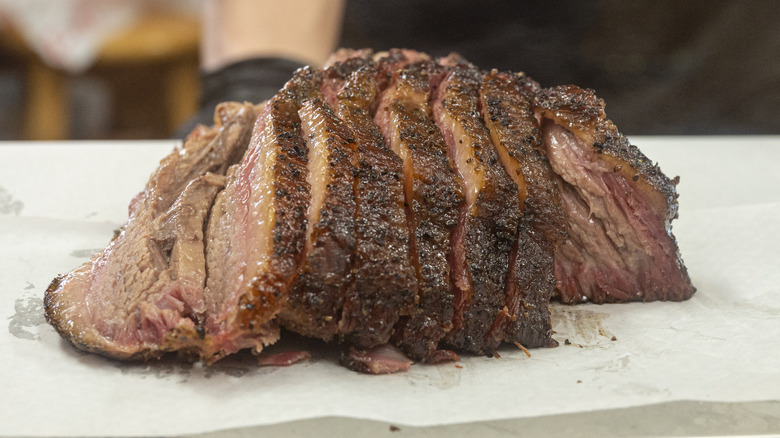Wet Vs. Dry Brining: What's The Difference?
To brine or not to brine is never the question. Hint: The answer is always to brine. Whether to wet or dry brine is the real question plaguing chefs since people first started curing meat. Both methods are foundational for cooking juicy, fall-off-the-bone meat. Get out your seasonings, stock pots, and salt shakers, because here is an outline of the pros and cons of each, and the differences between wet and dry brining.
First, let's define some terms. Britannica explains that "brine" is any water with a high concentration of salt and actually occurs in nature. Natural brines can be found underground, in sea beds, and in salt lakes, and are where much of the world's salt comes from. Thus the only essential ingredient to brine and the only one common between dry and wet brining is salt.
As for "brining" as it relates to cooking, Food Network defines the term as the process by which proteins are infused with salt, sugar, and other flavorings. How that protein is infused with said flavor is the process we are here to discuss today.
A wet brine infuses flavor through osmosis
When meat is infused with flavor, it uses the process of osmosis. In a condensed science lesson, osmosis is the passage of a substance (often water) through a semipermeable membrane resulting in a higher concentration of that substance inside whatever the membrane protects(via Merriam-Webster). Essentially, it's how one substance is absorbed into another through physical contact. In the case of wet brining, a mixture of liquid and seasonings are absorbed into a protein through osmosis.
In a wet brine, meat is typically soaked in a solution of water and salt, hydrating the cells and making the meat moist. When the meat is cooking, it's able to hold onto its moisture, explains Science of Cooking. The proof of moisture retention is evident. Amazing Ribs found that after an eight-hour brine, the meat's weight increased by 10%.
The first tip to wet-brining is the proper salt-to-water ratio. Real Simple suggests one cup to every gallon of water. Bring the solution of water and salt to a boil and let it cool completely before submerging the meat, writes Food Network. This is also the time to add your aromatics like peppercorn, bay leaves, or garlic and Smoking-Meat even suggests replacing the water with broth, cider, or beer. The second key to a successful wet brine is how long the meat sits in the brine. Made-In says this process can take one to two days, while some recipes recommend overnight or just a few hours. Food 52 says simply to leave the meat in its brine for one hour per pound.
Dry brine absorbs into the surface
For dry brines you'll want to keep the salt but remove the water. While curing meats to preserve and dry for long-term use has been around for centuries (via Meat Crafters), dry-brining was popularized by chef Judy Rodgers at Zuni Café in San Francisco, writes the New York Times. Dry brining is a simple mixture of salt and spices rubbed into the surface of the meat or skin of the bird, writes Food Network. Like wet-brining, the salt ratio is important to a perfectly seasoned piece of meat. Bon Appétit suggests about two teaspoons of salt per pound of meat.
Aromatics play a big role in dry-brining too. Because of the close contact of the spice mixture to the surface of the meat, the flavor is infused directly, writes Real Simple. Often meat like turkeys and chicken are rubbed down with the salt mixture inside and outside.
The science of dry-brining uses moisture but in a very different way than the osmosis of wet-brining. Made-In explains that quite soon after the salt hits the meat's surface, moisture droplets appear because the salt is drawing out the moisture in the protein. But, as the meat sits, the moisture is reabsorbed into the skin — essentially basting in its own juices. The salt has the same tenderizing effect on the proteins of the meat as it does in a wet brine.
Brining results in flavorful meat
Dry and wet brining have been pitted against each other over the years, and particularly as cooks search for the best method for producing a moist Thanksgiving turkey, writes the New York Times. Here are a few pros and cons of each method, which might help you decide which to use in your own cooking adventures.
A knock against wet-brining is that it takes up significant space. The submerged meat must be refrigerated and many kitchens don't have room for that, says Serious Eats. It also takes time, days in the case of a 20-pound turkey. While the bird is arguably juicier than a dry-brined fowl, some cooks complain of the moisture removing some of the flavor and the meat tasting watery, writes The Berkshire Eagle. Real Simple goes on to say that salt is the only flavor to come through in a wet brine, and aromatics are lost.
In comparison, dry-brining packs a punch but can take longer than wet brining. Simply Meat Smoking says dry-brining results in a more flavorful, aromatic, intense flavor but may take longer to really infuse the meat with flavor. And while My Recipes says a dry-brine is hassle-free, it too takes up space in refrigerators. Still, dry-brining ensures crispy skin and outer edges, writes Made-In.
While dry-brining is currently more popular, Smoking Meat suggests wet-brining skinless meats or delicate meats like fish and poultry. For meats with the skin intact or fattier meats like pork, lamb, and beef, they recommend using the dry-brine method. Either way, we expect the outcome using either method to be delicious.



